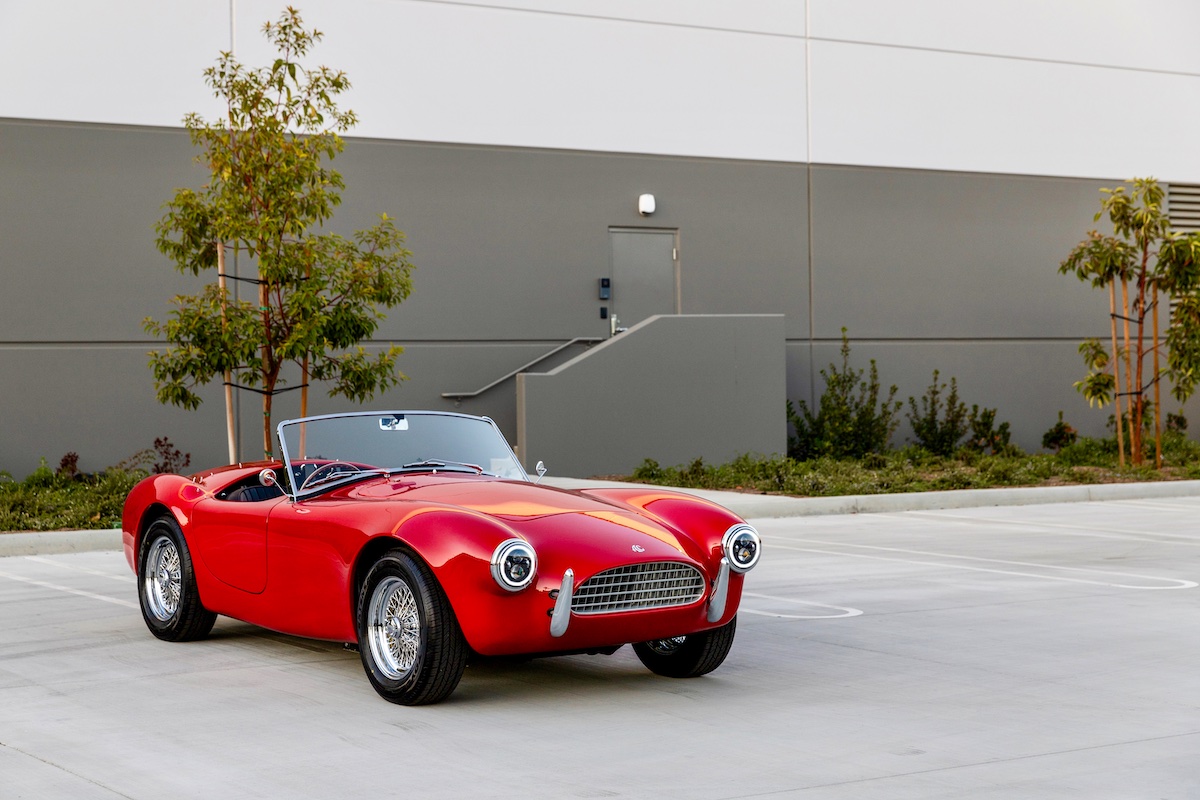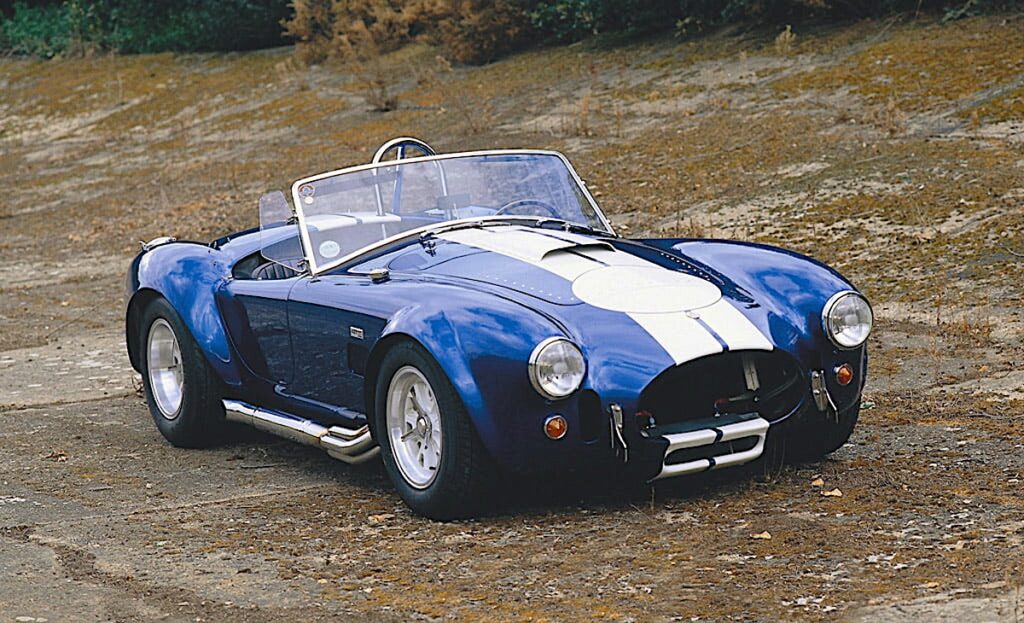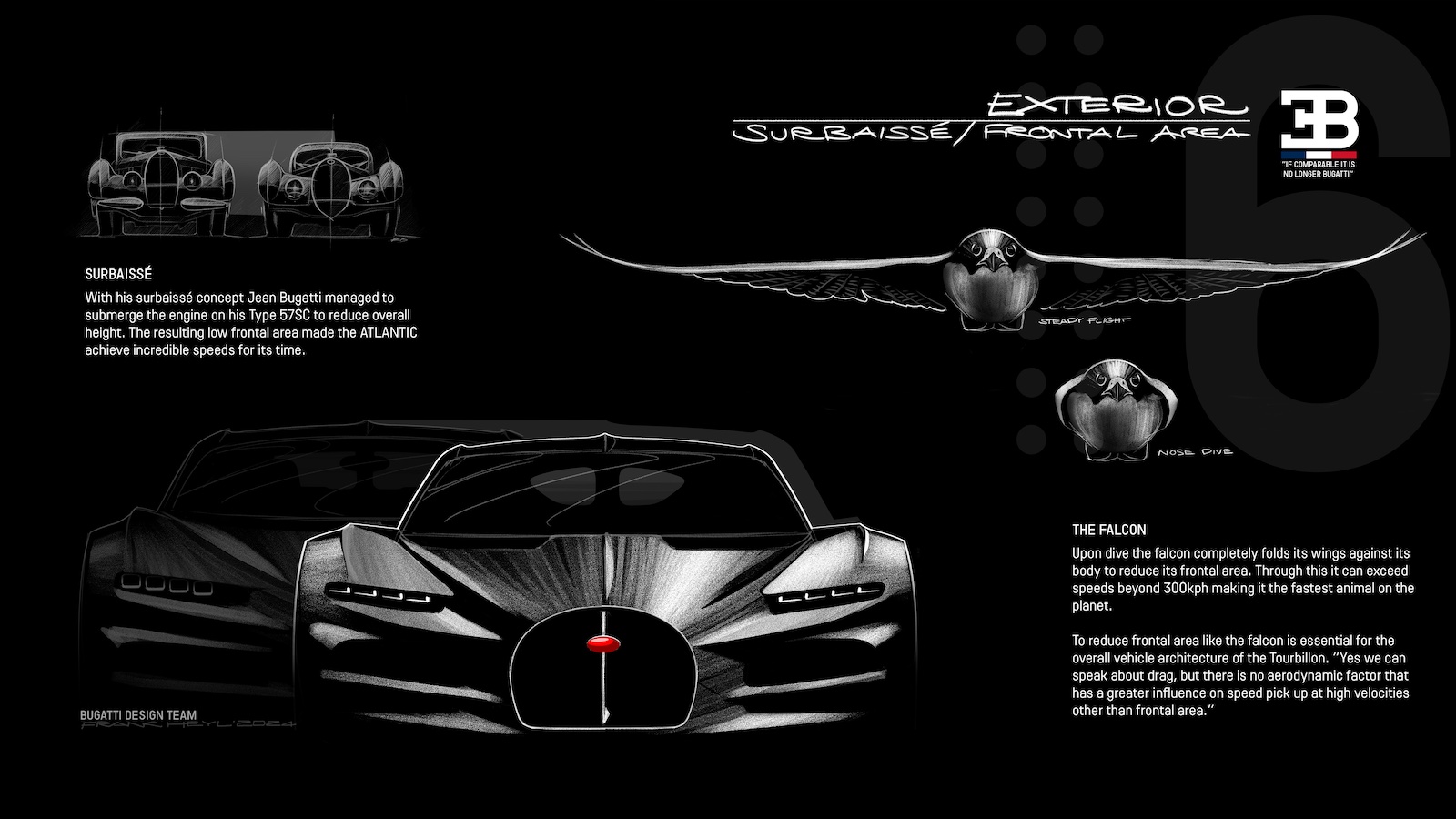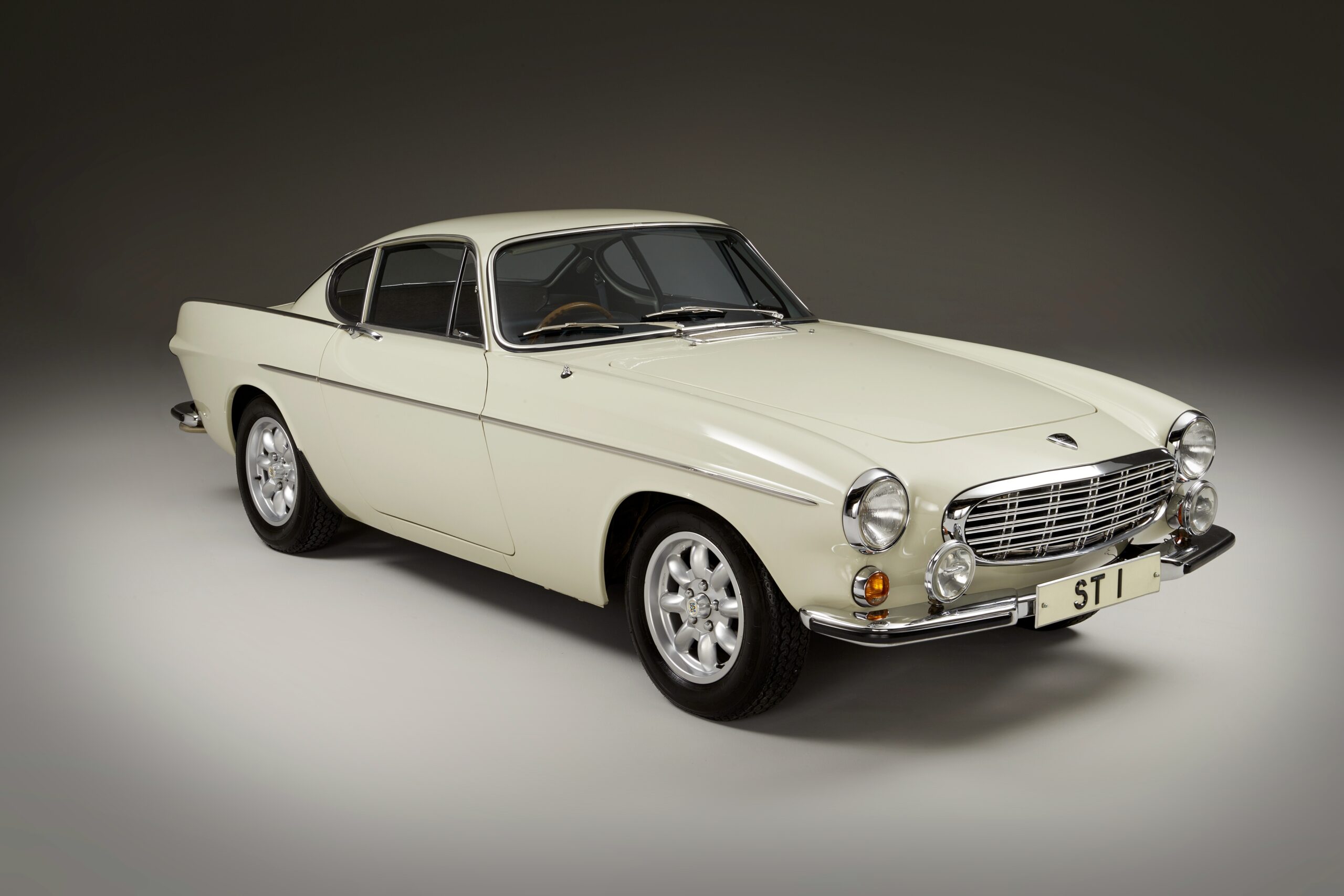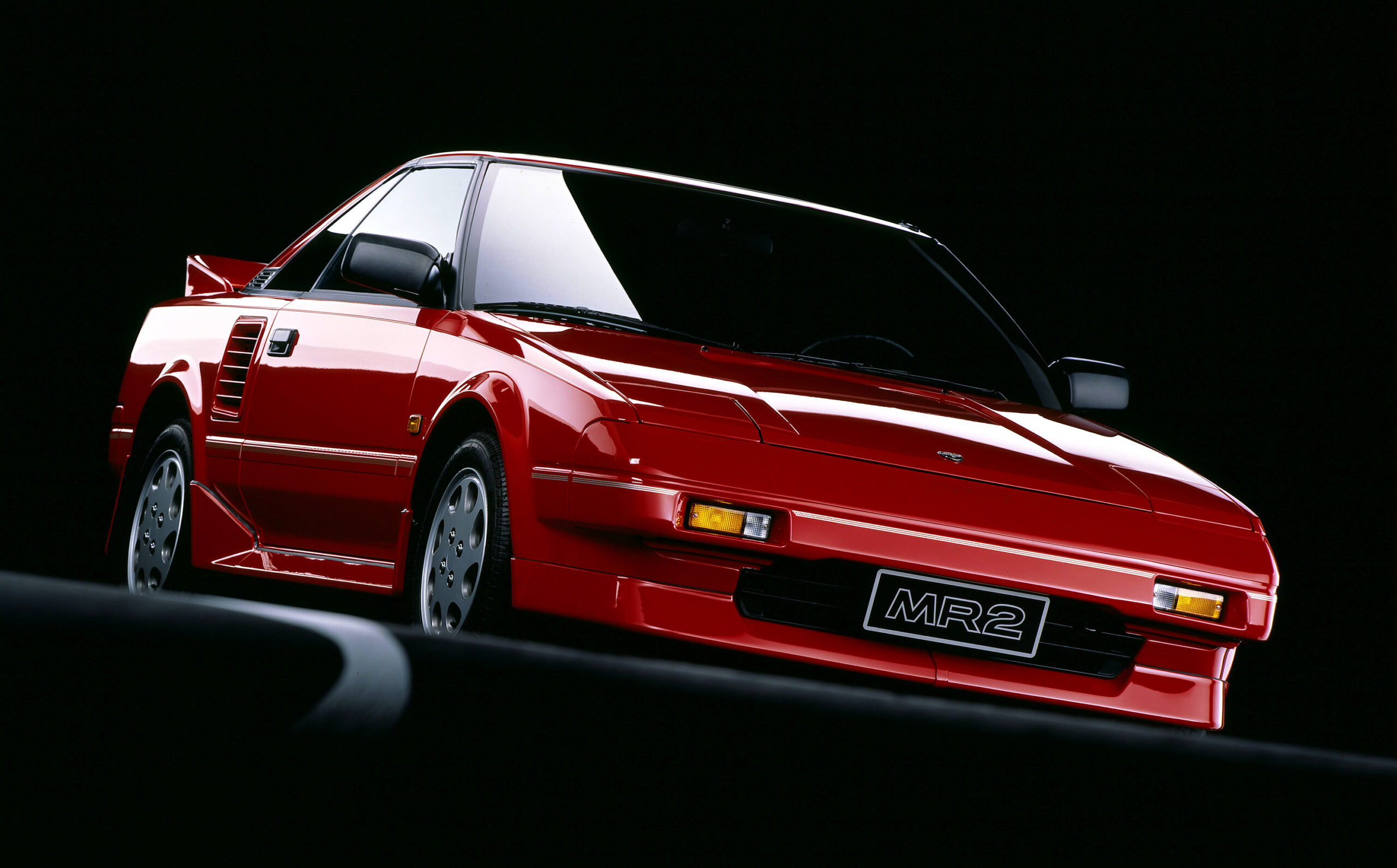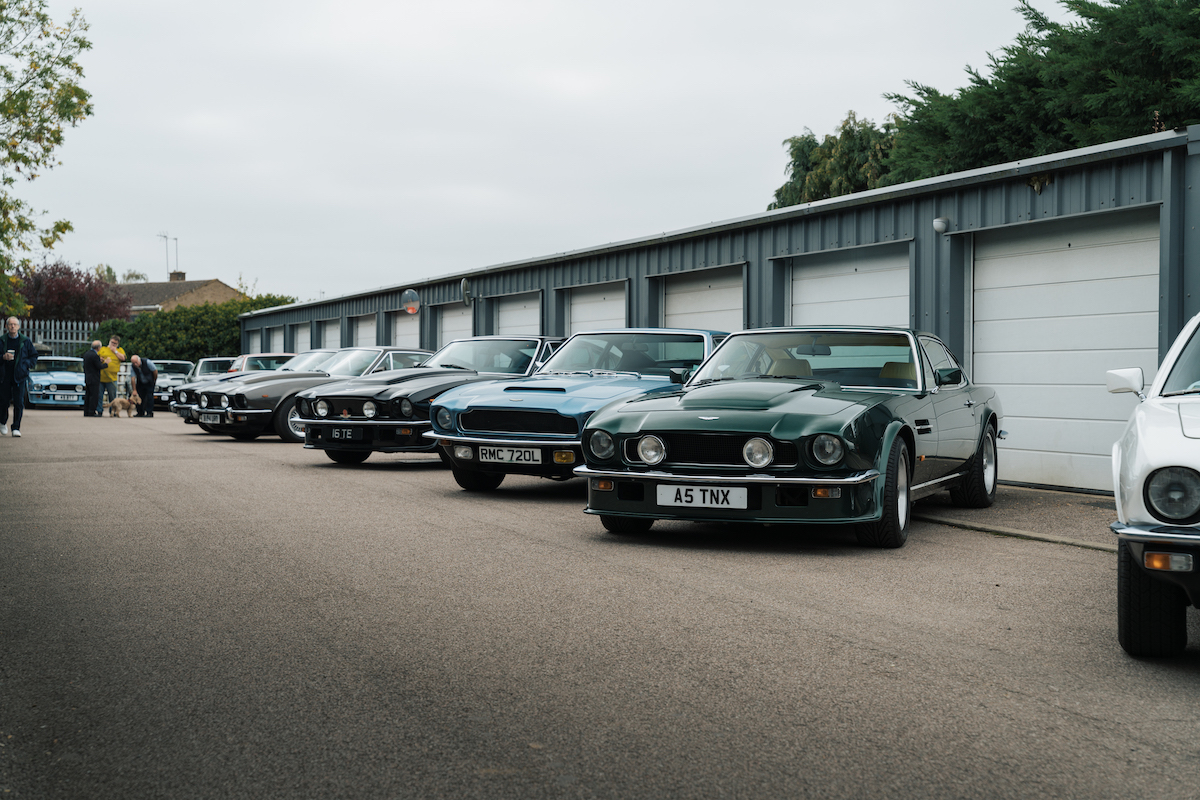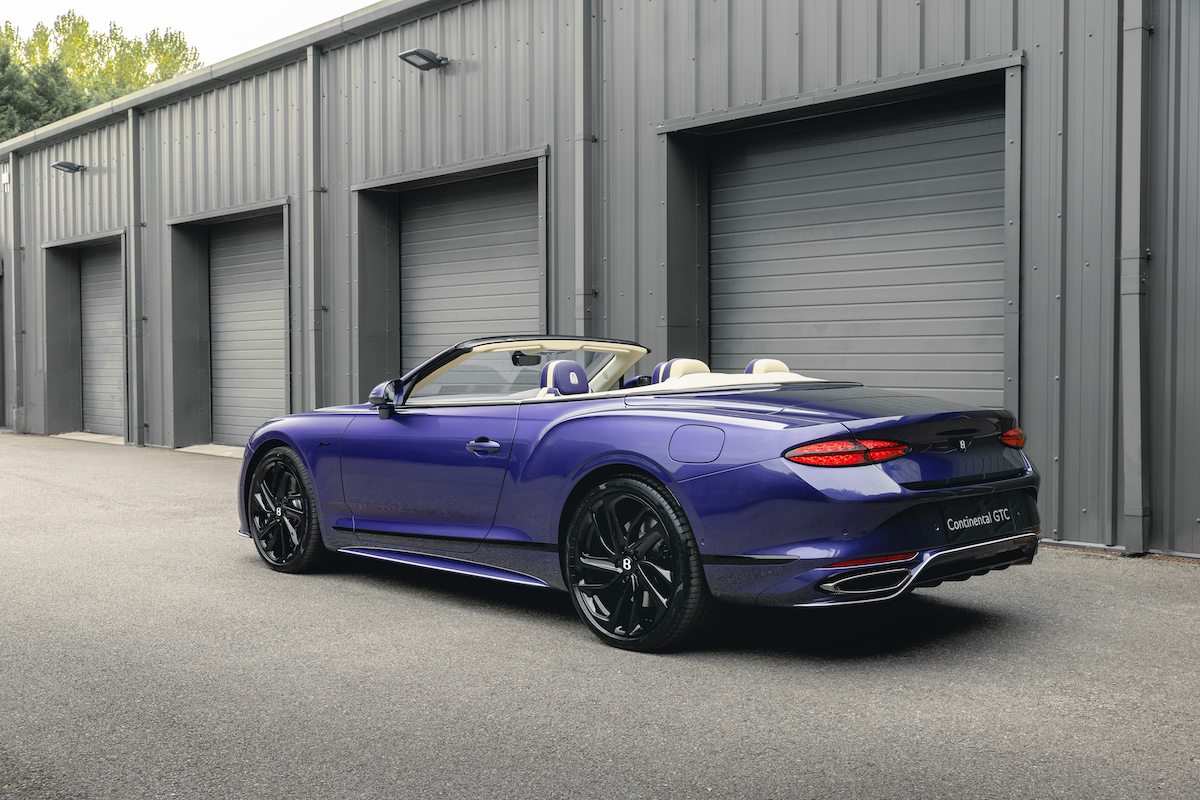Established in 1901, AC Cars is the UK’s oldest active vehicle manufacturer, combining rich heritage with cutting-edge innovation.
Known for its iconic sports cars, including the legendary AC Cobra, the company is dedicated to crafting exclusive sports cars that honour its storied past while combining new manufacturing technologies and materials with the craftsmanship and attention to detail it has delivered for over 120 years.
Here’s a brief history of the iconic British brand.
1901-1933: AC Cars’ early years
1901: The Weller brothers, including engineer and a prolific inventor John Weller, set up their company as engineers, repairers and manufacturers of motor cars and motorcycles in West Norwood, London. The business grows fast and Weller Bros. is appointed Official Repairer for the Automobile Club.
1902: John Portwine, a local butcher, becomes a shareholder in the newly-formed Weller Bros Ltd. His additional finance allows the company to grow and for some of John Weller’s inventions to bear fruit.
1903: John Weller presents his first car, the 20hp Weller Touring Car, at the Crystal Palace Motor Show. John Portwine convinces him to design a compact three-wheeled commercial delivery vehicle.
1904: Within a year of the 20hp Touring Car launching Weller goes into production with a three-wheel commercial delivery vehicle called the Autocarrier, from which the AC name is later derived. The Company name changes to Autocar and Accessories Ltd.
1907: In November 1907 the AC abbreviation is used for the first time and a new company Autocarriers Ltd is formed with Portwine and the Weller Brothers as directors. The AC emblem of letters in Art Nouveau style is still being used today, with minor changes and refinements over time. The success of the AutoCarrier leads to the design of a passenger vehicle based on the same design theme: the AC Passenger Machine – better known as The Sociable. It has an additional seat in place of the AutoCarrier’s cargo box and its success sees it remain in production until 1915.
1911: The company moves from West Norwood to Ferry Works in Thames Ditton where it remains for the next 70 years.
1913: Autocarriers Ltd. begins manufacturing its first four-wheel car, the 10hp AC Light Car, but production is interrupted by the outbreak of WWI.
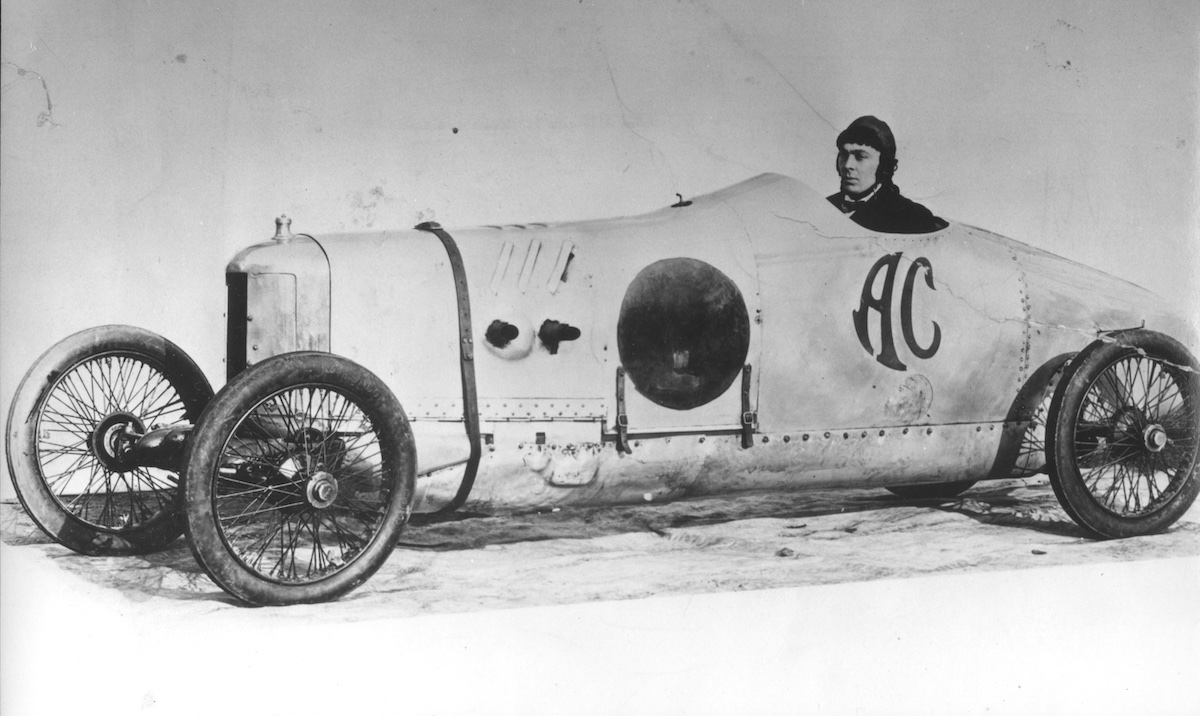
1919: The 25th London Cyclist Regiment is equipped with modern AutoCarriers with mounted Maxim guns, with other vehicles adapted as ammunition carriers. The War office asks the Weller Brothers to design and produce a prototype Light Armoured Car using the AC Light Car chassis.
1920: John Weller designs a new six-cylinder, 2.0-litre engine, the Light Six, with an initial capacity of 1477cc and 40hp, which is later increased to 1991cc and 105hp.
1921: Racing driver Selwyn F. Edge buys shares in the company and is appointed Governing Director in 1921. Weller and Portwine resign within the year and AC Cars Ltd. is formed in 1922. Edge eventually puts Weller’s Light Six engine into production. The engine is ahead of its time – its patented spring slipper chain tensioner has since been used by many other manufacturers – and remains in production until 1963.
1922: At Brooklands Circuit on 1st December 1922, an AC car with a four-cylinder version of the Light Six engine becomes the first 1500cc car to cover 100 miles in one hour, with an average speed of 101.39mph and a fastest lap of 104.85 mph. Along the way, it shatters another four records: flying half mile (108.4mph), 2 miles (108.4mph), 5 miles (104.16mph), 10 miles (103.79mph).
1925: AC Cars continues to leave its mark in the world of motor racing, engaging in various car competitions and adding a glittering array of trophies to the company display cabinet.
1926: Driving an AC car, the Honourable Victor Bruce becomes the first UK winner of the Monte Carlo Rally and the Mont des Mules hill climb. The following year his wife Mildred Bruce borrows an AC Six from Selwyn Edge and finishes the Monte Carlo Rally sixth out of 66 entrants, starting from John o’ Groats in Scotland and reportedly driving 1,700 miles without sleeping.
1930: The international recession forces AC into liquidation. William and Charles Hurlock, successful car and truck dealers in South London, buy AC for its factory and profitable servicing business with no initial intention to manufacture cars. Until William Hurlock wants a new car and uses available parts in store to build his own.
1933: AC is back at the London Motor Show with five cars on display. The following years see many different body styles, all the epitome of 1930s elegance, but within a few more years the gathering storm of WWII requires the factory to be transformed for the manufacture of fire-fighting equipment, aircraft parts, radar vans, flame throwers, guns and gun sights.
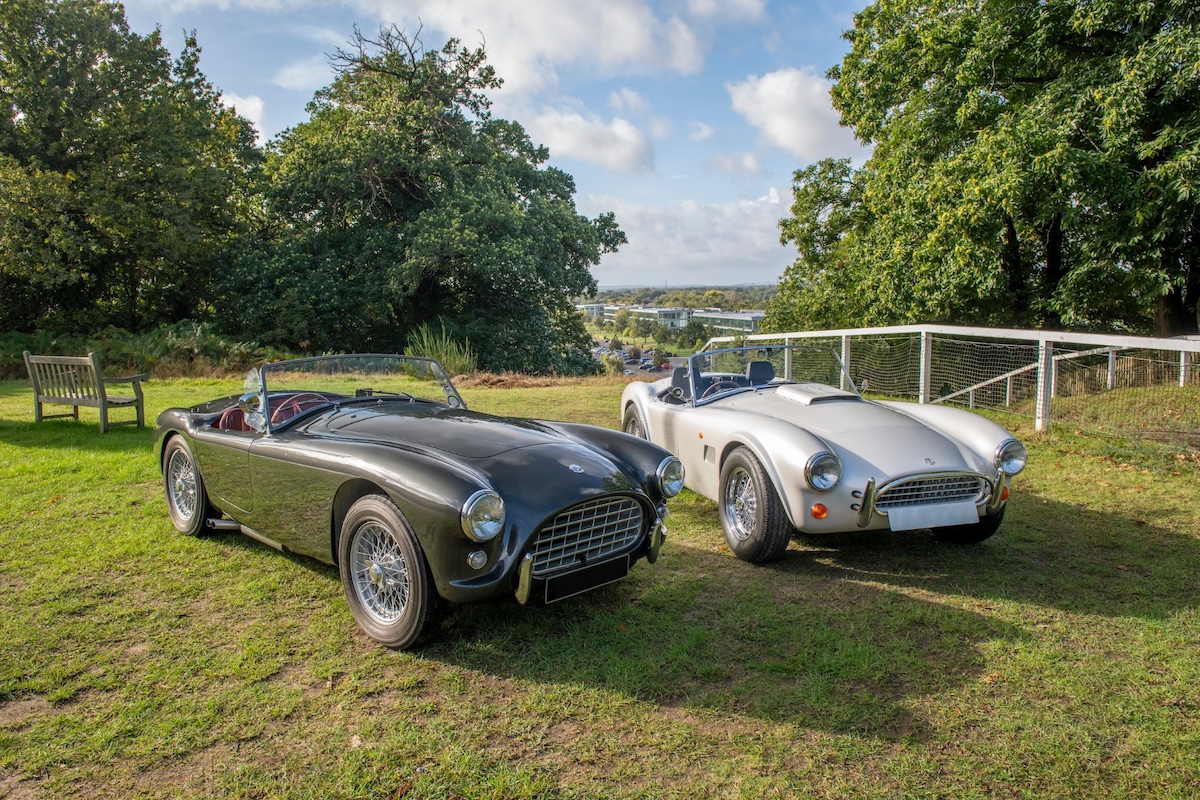
1949-1985: The rise and fall of the AC Ace and Cobra
1949: After the War the company is forced to diversify to ensure its survival, manufacturing golf trolleys called ‘Bagboys’ and electric trains to carry holiday makers along the pier at Southend on Sea. These AC-built rail cars run right up until the late 1970’s.
1953: The revolutionary AC Ace is launched featuring sleek and distinctive sports car body styling and a 3-inch tubular ladder-chassis. It quickly gains the respect of racing enthusiasts who appreciate the fact it can race it on the weekend and be used for everyday motoring.
1954: A coupe version of the AC Ace, the AC Aceca, is launched at the London Motor Show.
1957: The AC Ace continues its racing success and in 1957 an AC Ace Bristol finishes 10th overall at Le Mans, followed by 8th and 9th places the following year. In 1959 an AC Ace finishes 7th overall and first in the GT 2.0-litre class.
Diversification again raises its head and in 1957 AC wins a Government contract to produce the Invacar, which remains in production until 1977, becoming a common sight on British roads. This era also sees AC manufacture the three- and four-wheeled Petite.
1962: By the early 1960s, Ford is trying to find a car that can beat GM’s Corvette on the race track and develops a new lightweight V8 engine for that purpose. US racer Carroll Shelby, having noticed the racing success of the AC Ace, negotiates with AC Cars the design and manufacture of a vehicle to be powered by the new engine.
Shelby and AC Cars shoe-horn a 4.2-litre V8 engine into the Ace, creating the legendary AC Cobra. By June 1963 AC Cars commences manufacturing approximately 1000 cars for shipment to the USA where the engines are fitted. Some cars are built with similar specification for the European market. The Cobra is an instant success, with AC Cars producing all the chassis in the UK until the end of the collaboration with Shelby in 1968, after which it continues to make the original Cobra independently.
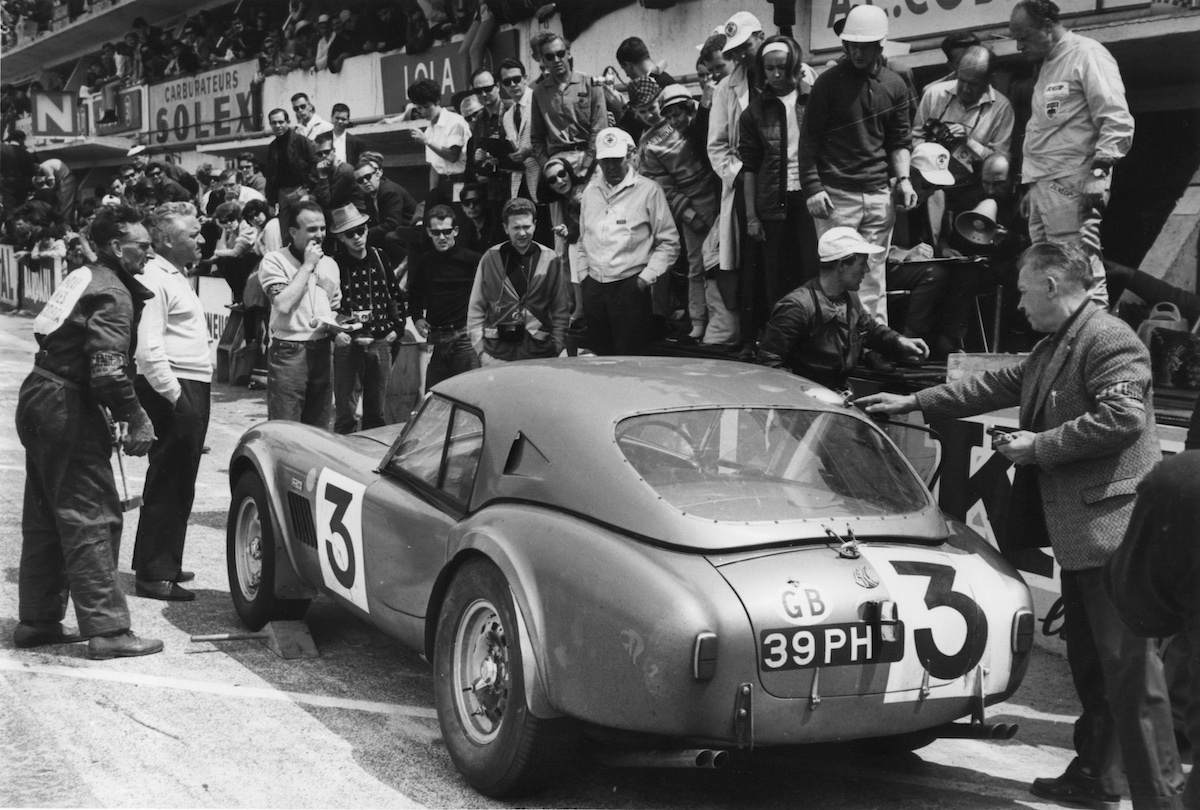
1963: AC builds two bespoke AC Cobras for the vehicle’s first ever attempt at the 24 Hours of Le Mans endurance race. The cars, which are sponsored by The Sunday Times and managed by Stirling Moss, feature a larger capacity 4.7-litre (289 cubic inch) V8 that is better suited to the challenges of the fast La Sarthe circuit. The AC Cobras also feature streamlined aluminium hardtop roofs to improve aerodynamics and top speed along the Mulsanne Straight.
Despite strong competition from far more experienced race teams one of the two AC cars manages to triumph, with the British duo of Ninian Sanderson and Peter Bolton finishing first in class and seventh overall. The AC Cobra proves itself a world-class sports car, covering 2592 miles at an average speed of 108mph and touching 160mph on the Mulsanne Straight. It also manages to finish some 27 laps ahead of its nearest class rivals.
1964: AC re-enter Le Mans with a special ‘Le Mans’ Coupe, built especially for the race using the Cobra chassis and a 289 V8 engine. Test-runs are necessary to develop the new race car but British racetracks can’t cope with sustained runs over 160mph, so the team takes to the newly-completed and still non-speed-limited M1 highway, stretching the Cobra’s legs to a blistering 183mph in the dead of night.
The Cobra later finishes 7th at Le Mans with subsequent developments upgrading the V8 from the original MK1, 260-cubic inch (4.2-litre) unit through the 289-cubic inch (4.6-litre), up to the legendary 427 S/C (Street Competition). The AC Cobra 427 S/C features larger 4-inch diameter chassis tubes to handle the immense torque of the 7.0-litre V8 engine which produces over 500hp and sets a Guinness Book of Records benchmark as the fastest production car in the world, a title it holds for many years.
1973: The MkIII Cobra goes on to become one of the most copied cars in the motor industry, but newer models from AC fail to achieve similar success. Italian coach builder Frua designs a new steel body for the Cobra chassis, the AC 428. With bodies imported from Turin, AC builds 29 convertibles and 51 fastbacks up to 1973 when production ceases.
AC introduces the five-speed AC 3000 ME at the 1973 London Motor Show. The mid-engine sports car features a GRP body around a platform chassis with front and rear subframes and is produced between 1979 and 1985.
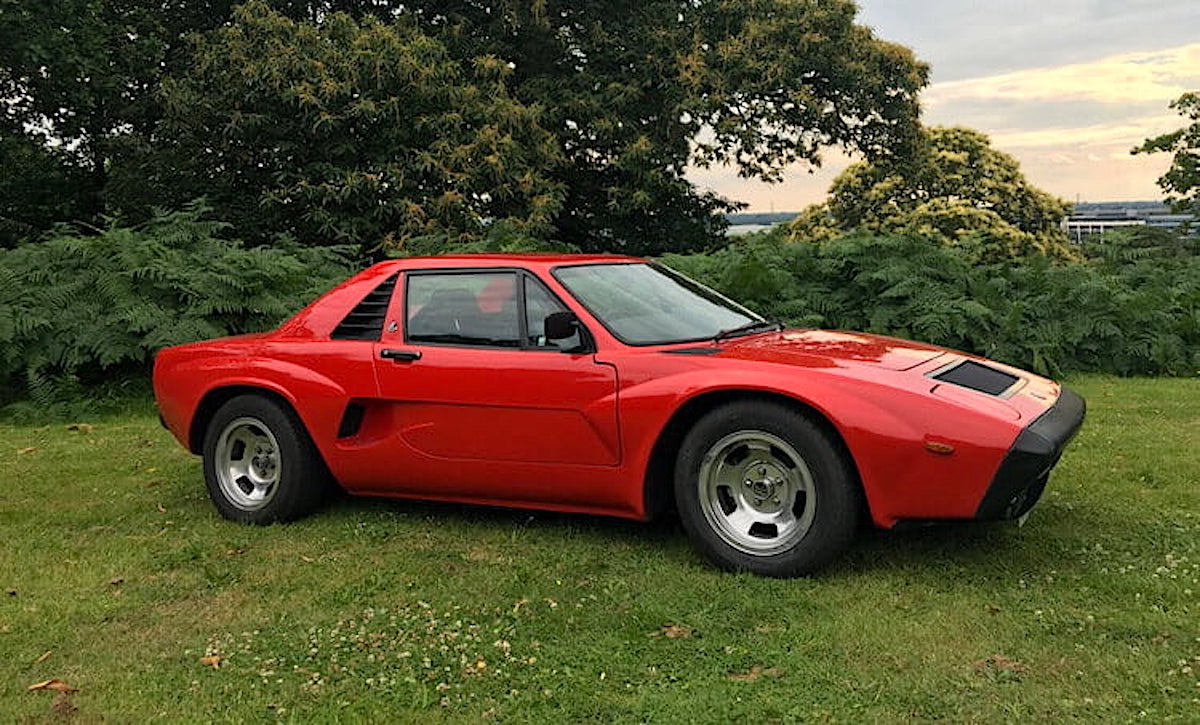
1999-present: AC Cars reemerges in the 21st century
1999: After the 1986 sale of AC’s Thames Ditton factory, the next high point in the brand story comes a year before the dawn of the new millennia with the launch of the AC Cobra Mark IV CRS at the London Motor Show.
2000: Two legendary British automotive companies collaborate to create the AC Cobra 212 S/C, an AC roadster fitted with a Lotus 3.5-litre twin turbo V8. The AC 212 S/C weighs just 900kg thanks to the use of pioneering carbon-fibre bodywork originally developed for the AC Cobra Mark IV CRS. Although only two are made, it is one of the fastest accelerating cars of its time, with a 0-60mph time of around 4.0 seconds.
2010: AC Cars begins studying the concept of a lightweight, electrically powered roadster.
2011: AC Cars celebrates its 110th birthday at the Geneva International Motor Show by unveiling its latest model, the AC Mk VI, a modern interpretation of the AC Cobra, featuring a 430hp V8 engine from a Corvette. The company also showcases the original AC Ace alongside the Mk VI, marking the brand’s return to the UK market.
2012: AC Cars develops and produces the AC 378 GT Zagato. The new model retains the traditional front engine, rear-wheel-drive configuration but adds a 6.2-litre, 437bhp engine, with bodywork by famed Italian automotive design house and coachbuilder Zagato.
2015: Research and development continues into the engineering of all-electric models based on a bespoke AC Cars’ platform.
2016: The AC Cobra MkI 260 Legacy Edition is revealed, with just nine of the limited-edition aluminium-bodied AC Cobras produced in the UK. The cars are built under exact 1962 specifications using traditional materials and crafting techniques.
2017: The AC Cobra 378 is announced, based on the design of the original Cobra MkIV, available with a choice of two 6.2-litre V8 engines: a naturally aspirated unit producing 440bhp, or a supercharged engine with 550bhp.
2018: The first pre-production electric vehicles are assembled and trialled. The cars combine AC Cars’ traditional skills with cutting-edge technology and herald a new chapter in the company’s development of vehicles.
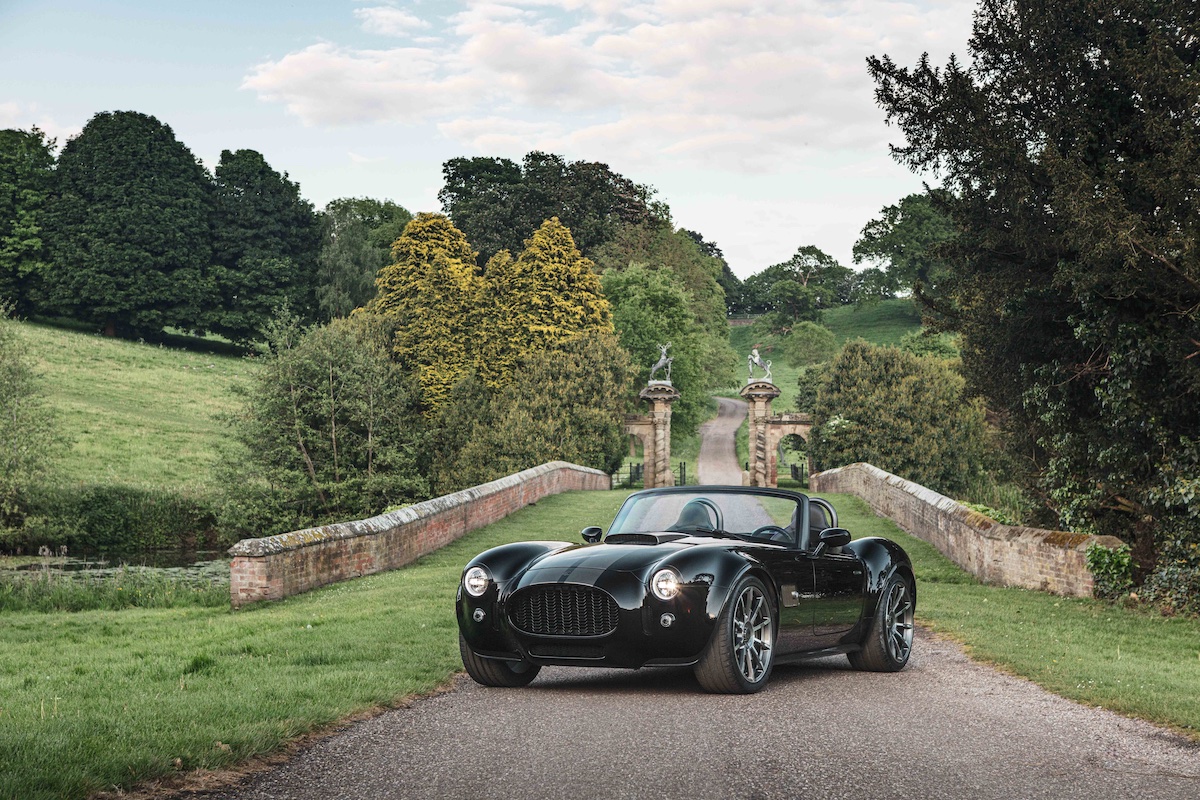
2019: Swiss entrepreneur David Conza becomes an investor in AC Cars and is appointed as COO, working with Alan Lubinsky who has headed the company since 1994, to help shape the future direction of the famous British marque. A new chassis design concept is begun, allowing improved performance and handling while retaining the famous design of the AC Cobra.
2020: AC Cars reveals the new AC Cobra 140 Charter Edition, which uses the same 350bhp 2.3-litre EcoBoost four-cylinder engine as found in the Ford Mustang. The company also unveils its first electric vehicles, including the AC Cobra Series 1 electric. Development of new models continues along with investment in new powertrain technology and moving production of the iconic roadster back to Europe
2021: AC Cars celebrates its 120th birthday with 12 special editions of its recently announced AC Cobra Superblower. The quickest road-going production AC Cobra ever built, the limited production model is powered by a 580bhp supercharged V8 and features a distinctive livery inspired by the company’s racing heritage.
2022: AC Cars announces the development of the ground-breaking new AC GT Roadster.
2023: AC Cars announces a deal with the historic Donington Park circuit to establish a new headquarters in the UK, as the company looks to expand its facilities.
The first photos of the new AC GT Roadster appear, with the all-new high-performance boasting a clean-sheet design that remains faithful to the spirit of the original car from the 1960s and a unique aluminium chassis. The state-of-the-art AC GT Roadster later makes its global premiere at London’s Tottenham Hotspur Stadium, just 25 miles from where the company was first established. AC Cars becomes an official partner of Le Mans Classic 2023, celebrating the 100th anniversary of the 24 Hours of Le Mans and the AC Cobra’s class win in 1963, while giving the new AC GT Roadster its first public appearance.
2024: AC Cars cements its status as Britain’s oldest active vehicle manufacturer, celebrating its 123rd anniversary with the start of production of the AC Cobra GT Roadster, expansion of its Donington Park HQ, and the first details of its next model- the AC GT Coupe.
The company conducts first dynamic demonstrations and drive experiences of the AC GT Roadster.
First official images of the production-ready AC GT Coupe are published, showing the road-going model that draws on the company’s rich racing heritage.
AC Cars reintroduces one of its all-time great sports cars with the new AC Ace and AC Ace Bristol. Built by AC Cars’ Classics division, the reborn models are available with a petrol engine as well as a fully electric drivetrain option.
